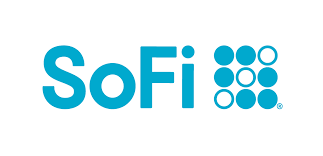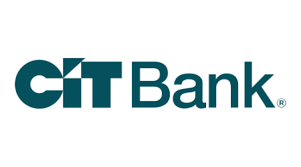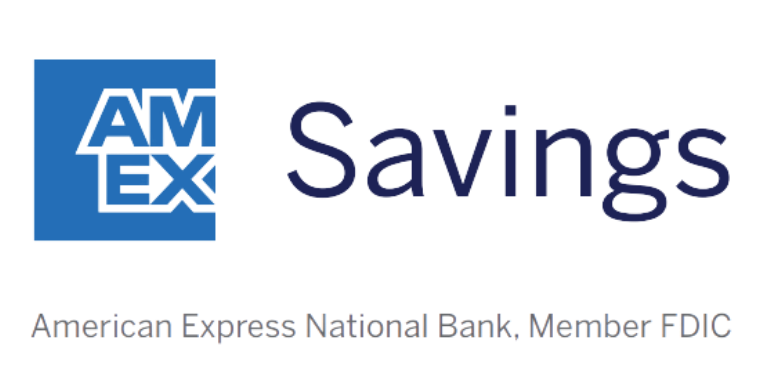After weighing the pros and cons of online banks, I opened an account with a banking app. It took me less than 10 minutes to set up, and it's a huge step up from my previous bank. But it's not for everyone. Despite their advantages, online banks have their downsides.
Open an online bank account if you prioritize easy access and high returns on deposits. Online banks typically offer the best rates and lowest fees of any bank type.
Online banks don't offer branches and assume you're proficient with navigating online apps and websites. Read on to compare the pros and cons of online banks. That way, you can choose the right type of bank with confidence.
Pros of online banks
Online banks have become increasingly popular, and there are lots of reasons to like them. They offer few fees, high interest rates, and top-notch security, among other perks.
Fewer fees
Online banks almost never charge monthly fees for simply owning the account. That's different from many brick-and mortar banks, which often charge monthly fees to cover the cost of operating physical branches.
Online banks do away with a lot of other common fees too. Many don't charge you for using competitor ATMs, and some even reimburse you if ATM owners charge you fees. Some have ended overdraft fees, which means they don't charge you for attempting to overdraw from your checking account.
Low fees benefit banking beginners especially. Monthly maintenance fees can strain low budgets, and overdraft fees impact people with low account balances the hardest. Hence, many of the best banks for college students are online banks.
Higher APYs
Online banks typically offer more competitive annual percentage yields (APYs) on deposit accounts than brick-and-mortar competitors. This is another perk of not having to maintain a costly branch network.
According to FDIC data, the average national deposit rate for a savings account in August 2023 is 0.43%. That would earn a $10,000 deposit a yearly return of $43. The best online savings accounts offer 10 times that amount. Right now, a $10,000 deposit could earn you $430.
Here's a closer look at online vs. brick-and-mortar bank APYs for top savings accounts. Ally represents online accounts, and Bank of America represents brick-and-mortar accounts:
Compare savings rates
Make sure you're getting the best account for you by comparing savings rates and promotions. Here are some of our favorite high-yield savings accounts to consider.
| Account | APY | Promotion | Next Steps |
|---|---|---|---|

Open Account for SoFi Checking and Savings
On SoFi's Secure Website.
Rating image, 4.50 out of 5 stars.
4.50/5
Our ratings are based on a 5 star scale.
5 stars equals Best.
4 stars equals Excellent.
3 stars equals Good.
2 stars equals Fair.
1 star equals Poor.
We want your money to work harder for you. Which is why our ratings are biased toward offers that deliver versatility while cutting out-of-pocket costs.
|
up to 3.80%²
Rate info
You can earn the maximum APY by having Direct Deposit (no minimum amount required) or by making $5,000 or more in Qualifying Deposits every 30 days. See SoFi Checking and Savings rate sheet at: https://www.sofi.com/legal/banking-rate-sheet.
Min. to earn: $0
|
New customers can earn up to a $300 bonus with qualifying direct deposits!¹
|
Open Account for SoFi Checking and Savings
On SoFi's Secure Website. |

Open Account for CIT Platinum Savings
On CIT's Secure Website.
Rating image, 4.50 out of 5 stars.
4.50/5
Our ratings are based on a 5 star scale.
5 stars equals Best.
4 stars equals Excellent.
3 stars equals Good.
2 stars equals Fair.
1 star equals Poor.
We want your money to work harder for you. Which is why our ratings are biased toward offers that deliver versatility while cutting out-of-pocket costs.
|
4.10% APY for balances of $5,000 or more
Rate info
4.10% APY for balances of $5,000 or more; otherwise, 0.25% APY
Min. to earn: $100 to open account, $5,000+ for max APY
|
Earn a bonus of at least $225 after a one-time deposit of $25,000+.
Transfer a one-time deposit of $25,000-$49,999.99 for a bonus of $225. Transfer a one-time deposit of $50,000+ for a bonus of $300. Account must be opened with code PS2025 while this promotion lasts, and funded within 30 days. Bonus will be fulfilled within 60 days from the funding date. There is no period of time where the customer will be required to maintain the funds. Account must be open when bonus is credited. One bonus per account and primary customer. Bonus will be credited into the Platinum Savings Account that fulfills the funding requirement. Funding can be deposited all at once or incrementally.
|
Open Account for CIT Platinum Savings
On CIT's Secure Website. |

Open Account for American Express® High Yield Savings
On American Express's Secure Website.
Rating image, 4.00 out of 5 stars.
4.00/5
Our ratings are based on a 5 star scale.
5 stars equals Best.
4 stars equals Excellent.
3 stars equals Good.
2 stars equals Fair.
1 star equals Poor.
We want your money to work harder for you. Which is why our ratings are biased toward offers that deliver versatility while cutting out-of-pocket costs.
|
3.70%
Rate info
3.70% annual percentage yield as of April 4, 2025. Terms apply.
Min. to earn: $0
|
N/A
|
Open Account for American Express® High Yield Savings
On American Express's Secure Website. |
SoFi disclosure:
¹ New and existing Checking and Savings members who have not previously enrolled in Direct Deposit with SoFi are eligible to earn a cash bonus of either $50 (with at least $1,000 total Direct Deposits received during the Direct Deposit Bonus Period) OR $300 (with at least $5,000 total Direct Deposits received during the Direct Deposit Bonus Period). Cash bonus will be based on the total amount of Direct Deposit. Direct Deposit Promotion begins on 12/7/2023 and will be available through 1/31/26. See full bonus and annual percentage yield (APY) terms at sofi.com/banking#1.
² SoFi members who enroll in SoFi Plus with Direct Deposit or by paying the SoFi Plus Subscription Fee every 30 days or with $5,000 or more in Qualifying Deposits during the 30-Day Evaluation Period can earn 3.80% annual percentage yield (APY) on savings balances (including Vaults) and 0.50% APY on checking balances. There is no minimum Direct Deposit amount required to qualify for the stated interest rate. Members without either SoFi Plus or Qualifying Deposits, during the 30-Day Evaluation Period will earn 1.00% APY on savings balances (including Vaults) and 0.50% APY on checking balances. Only SoFi Plus members are eligible for other SoFi Plus benefits. Interest rates are variable and subject to change at any time. These rates are current as of 1/24/25. There is no minimum balance requirement. Additional information can be found at http://www.sofi.com/legal/banking-rate-sheet. See the SoFi Plus Terms and Conditions at https://www.sofi.com/terms-of-use/#plus.
³ We do not charge any account, service or maintenance fees for SoFi Checking and Savings. We do charge a transaction fee to process each outgoing wire transfer. SoFi does not charge a fee for incoming wire transfers, however the sending bank may charge a fee. Our fee policy is subject to change at any time. See the SoFi Checking & Savings Fee Sheet for details at sofi.com/legal/banking-fees/.
⁴ SoFi Bank is a member FDIC and does not provide more than $250,000 of FDIC insurance per depositor per legal category of account ownership, as described in the FDIC’s regulations.
Any additional FDIC insurance is provided by the SoFi Insured Deposit Program. Deposits may be insured up to $3M through participation in the program. See full terms at SoFi.com/banking/fdic/sidpterms. See list of participating banks at SoFi.com/banking/fdic/participatingbanks.
⁵ We’ve partnered with Allpoint to provide you with ATM access at any of the 55,000+ ATMs within the Allpoint network. You will not be charged a fee when using an in-network ATM, however, third-party fees incurred when using out-of-network ATMs are not subject to reimbursement. SoFi’s ATM policies are subject to change at our discretion at any time.
⁶ Early access to direct deposit funds is based on the timing in which we receive notice of impending payment from the Federal Reserve, which is typically up to two days before the scheduled payment date, but may vary.
⁷ Overdraft Coverage is limited to $50 on debit card purchases only and is an account benefit available to customers with direct deposits of $1,000 or more during the current 30-day Evaluation Period as determined by SoFi Bank, N.A. The 30-Day Evaluation Period refers to the “Start Date” and “End Date” set forth on the APY Details page of your account, which comprises a period of 30 calendar days (the“30-Day Evaluation Period”). You can access the APY Details page at any time by logging into your SoFi account on the SoFi mobile app or SoFi website and selecting either (i) Banking > Savings > Current APY or (ii) Banking > Checking > Current APY. Members with a prior history of non-repayment of negative balances are ineligible for Overdraft Coverage.
It's not just better rates on savings accounts. Online banks also have high APYs on certificates of deposit (CDs). And you're more likely to find interest-bearing checking accounts online than offline. These market-beating interest rates especially benefit heavy savers with lots of money deposited in their accounts.
Easy to open
Online banks let you open accounts in minutes from the comfort of your home. You don't have to wait until business hours, and you don't have to make an appointment with your local branch. If you decide you want to open a checking account online at 3 a.m. on Christmas morning, no one's going to stop you.
Online banks do require you to provide some personal info before opening new accounts. You'll need to give your name, address, Social Security number, and date of birth. Some online banks require you to deposit money right away. But others give you weeks-long grace periods to fund new accounts.
Great online and mobile banking tools
Since online banks operate entirely online, they put a ton of effort into making websites and banking apps friendly and easy to use.
Online banks typically offer nifty mobile apps. These let you eyeball your balance, transfer funds between accounts, remotely deposit checks, pay bills online, and perform peer-to-peer payments.
Some online banks offer automated savings tools. You may be able to set up automatic transfers to savings accounts. Some apps offer round-ups, which round up purchases to the nearest dollar and send the change to your savings account.
Security
Online banks are backed by the same Federal Deposit Insurance Corporation (FDIC) insurance as brick-and-mortar banks. This protects your money up to $250,000 per account per bank against bank failure. Bank failures are rare, but they happen.
Online banks encrypt websites to help keep your financial data safe. This encryption is identical to what traditional banks use to safeguard accounts.
Cons of online banks
Online banks have a lot going for them, but there are a few drawbacks you should be aware of before opening an account with one.
No branches
Online banks offer zero physical branches. Running into banking trouble? You'll need to contact a bank representative via phone, email, chat, or text message. Brick-and-mortar accounts let you meet bank representatives face to face; not so for online banks.
To take advantage of the perks online banks offer, you need to be able to navigate the internet. Do you have unreliable internet access? Do you struggle to navigate smartphones? Consider offline alternatives. Traditional banks can meet your needs without forcing you to open apps or connect to wifi.
Limited deposit and withdrawal options
Banks limit your access to cash deposits and withdrawals.
Depositing cash is challenging when a bank doesn't have any physical branches. Many online banks offer a limited number of deposit-taking ATMs, but if you don't have one of these nearby, you might be out of luck. That's why some people choose to maintain checking accounts at brick-and-mortar banks -- they can transfer cash to these easily.
Withdrawing cash is typically easier. Online banks often partner with large, nationwide ATM networks you can use for no fees. But if you don't have any ATMs close by, you may be forced to use expensive out-of-network ATMs.
Customer service
Online banks offer limited customer service. You can't meet representatives in person. And it may be harder to form lasting relationships with bankers online.
Online banks typically offer phone support or live chat. Some customers prefer this. After all, you don't always need a banker's help to move money from point A to point B. But sometimes you would benefit from personalized assistance. Brick-and-mortar banks offer this, online banks don't. This is especially detrimental to customers who prefer heavy guidance.
Less account variety
Online banks offer checking and savings accounts. Some offer CDs. Few offer money market accounts or more than one type of checking or savings account. Some actually offer lots of product options, but many offer less account variety than brick-and-mortar banks.
Is an online bank right for me?
An online bank may be right for you if you have reliable internet access. You'll also want to be digitally savvy because online banks don't offer physical bank branches -- it's all online.
Online banks offer a winning combination of few fees and easy access, ideal for folks new to banking. You can whip up an account in minutes and start saving. These features especially benefit college students, digital natives, and customers with low bank balances.
Some online banks also offer market-beating APYs. Folks who have upward of a thousand dollars in savings accounts profit from this feature the most. They could earn substantial returns on deposits at online banks.
But customers who frequently deposit cash may struggle to do so through an online bank. Plus, many online banks fail to offer physical checks. If you're used to writing checks, and you want to continue to do so, then brick-and-mortar banks may be more your speed.
READ MORE: Are online banks safe?
FAQs
-
Online banks are safe and offer competitive interest rates with few fees. They're a great option for many people, but it ultimately depends on how you prefer to bank. Online bank features may especially benefit users who have low checking or high savings account balances.
-
Many online banks partner with a nationwide ATM network to give their customers access to cash. Some even allow their customers to use any ATMs they want and then reimburse them for any fees they pay.
We're firm believers in the Golden Rule, which is why editorial opinions are ours alone and have not been previously reviewed, approved, or endorsed by included advertisers. Motley Fool Money does not cover all offers on the market. Motley Fool Money is 100% owned and operated by The Motley Fool. Our knowledgeable team of personal finance editors and analysts are employed by The Motley Fool and held to the same set of publishing standards and editorial integrity while maintaining professional separation from the analysts and editors on other Motley Fool brands. Terms may apply to offers listed on this page. APYs are subject to change at any time without notice.